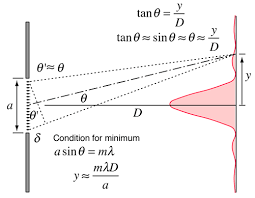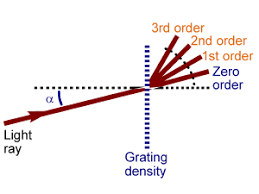I think putin is a great leader, would make a great world president.First you are avoiding the question can stealth aircraft be detected? answer yes; it is not who played better its assets like in Serbia, Irak or Yugoslavia.The radar consisting of the four modules controls the 360-degree sector and occupies a 100 x 100 m area.
Clearly states it’s fixed site, the picture on their site shows a fixed radar system, not the truck mounted one you have pictured.
Your onion will be peeled, seriously these claims may work with the chief buyer for Syrian Air Force, not so much for me.
100 missiles, I don’t think, west didnt spend this many on Iraq.
It says you can detect stealth aircraft, in fact i will put it better, like Israel did in 1967, you can destroy aircraft in their bases just to render stealth aircraft useless.
Remember each new type recently are built in lower numbers.
Now the topic is not who is going to beat who, but rather if stealth is good enough to detect Stealth Intakes such as Caret or DSI types.
All the formulas i have given do not say stealth aircraft can not be detected.
Furthermore we are discussing if DSI is worthed at high speeds, the aerodynamic answer is no, the design number of an intake after 600 km requires some type of boundary layer bleed or diverter. design number of an intake limits the range of speeds it will be used, design speed of an intake means you can not have an intake type good for all speeds but rather just to some ranges.
The equations say given the right numbers you will detect any aircraft.
The limitation is how much electricity can generate an aircraft and the radar constraigns of temperature and loses.
So yes, some aircraft have weak radars, Stealth aircraft can fly far from aircraft with radars with low power density.
However today we have smarter aircraft that share information, so does not matter, F-35 will detect J-20 or Su-57 simply because the interconnectivity of the sensors, the plane that will survive will be the one that can avoid being hit, to do that you need stealth, speed and good avionics.
remember DSI have stealth an performance constraigns too.
You are using an out of date browser. It may not display this or other websites correctly.
You should upgrade or use an alternative browser.
You should upgrade or use an alternative browser.
Intake design and general stealth discussions
- Thread starter chuck4
- Start date
-
- Tags
- stealth stealth fighter
pegasus
I really should change my personal text
- Joined
- 22 March 2019
- Messages
- 303
- Reaction score
- 208
it is not politics, we are discussing technical details, if you can not give technical details do not hide in politics, you are basically saying i have not counter argument to reply and enrich the topic in technical termsI think putin is a great leader, would make a great world president.
I think pegasus's points on optimizing DSI for supersonic performance are highly relevant, however.
A big on-going mystery is the apparently lackluster nature of the J-20's maneuverability. Chinese fanboys usually claim that the PLAAF isn't going to give away the goods as to how agile the J-20 is, but we've been given a strip tease on the J-20's capabilities for years. Likewise, considering that the J-20 is scheduled to be re-engined, why not give enemies a false impression of the J-20's agility under the older Al-31 or WS-10 engines when the WS-15 is waiting in the wings?
Moreover, we know from the J-20's other characteristics than the J-20 SHOULD be relatively maneuverable; i.e, the wing loading is good and the T/W is around the same level as a F-35 at 60% fuel.
One possibility is that the DSI is just optimized for high speeds, i.e, the DSI bump is overly large and reduces air pressure at low subsonic speeds.
The VTech student analysis suggested that with 21.77 meters length and about 13.1 diameter (most accurate numbers are currently about 20.4m length with 12.9 meters wingspan) a shock probe forms at about Mach 2.1, and their estimate is that the J-20 is a Mach 2.1 to Mach 2.5 fighter.
Optimizing a DSI for middling Mach 2 regimes, on the other hand, implies slouch at subsonic speeds.
Something I've pointed out is that with moderate J-20 weight numbers, the J-20 could end up having absurd 1.45 to 1.6 T/W ratios at 60% fuel if WS-10s come to the 180kn range. That implies that the J-20 could simply rely on surplus power at subsonic speeds instead of focusing on high pressure recovery now.
If you're stuck working with poor engines in the 125kn-145kn range when you want a 180kn engine, you have two workarounds. First, you can optimize for low-speed maneuverability a la the Su-57, while sacrificing high-speed performance. When the upgraded engines come in, you now improve both in maneuverability and high-speed performance. Second, you can optimize for high-speed performance while sacrificing low-speed maneuverability.
The question then comes to, when you're running a modern stealth fighter in an arena where most competitors are running 4th generation aircraft, do you optimize for high-speed performance or do you optimize for low-speed performance? Remember, at the end of the day, the J-20 is currently slated to be equipped with only 6 missiles, two of them dogfight missiles. If you assume it'll take 2 missiles to knock down an enemy plane, would you prefer to dogfight or would you prefer BVR combat, where 5th generation aircraft excel in?
Do we currently have any reliable up-to-date sources re: the J-20’s current maneuverability and subsonic (and/or supersonic) performance?
If we do then such conjecture around the role of the DSI in those performance parameters may be warranted.
If not then this conjecture appears somewhat premature, with a lot of “...and if...” accumulating.
Maneuverability evidence:
Watch 0:21.
Start around 1:11:21 for the J-20 in action. Watch the nozzle positions to check for when afterburners are on.
Pilot statement:
"The J-20 is good subsonically, but it's outstanding supersonically."
Song Wencong design document ended up being substantially incorrect, insofar as he proposed an aircraft with caret intakes instead of DSI.
However, he stated that short-take off, supermaneuverability, stealth, and supercruise were targets of the J-20 program.
As a retort to Chinese nationalists who want to exaggerate the J-20's maneuverability, I point out that supermaneuverability refers to post-stall maneuvering, which can also be understood as ITR, as opposed to the sustained turn rates that are a mainstay of dogfighting.
====
When I discuss the Su-57, part of the stealth objective seems to be stealthy enough to get into WVR combat, which is typically dogfighting, as supersonic maneuvering has corner radiuses measured in miles. In my view, low-speed (sub-Mach 1) and dogfighting are synonymous, as by the time you get to Mach 2 9G turns are around 2 degrees / second.
That said, I wouldn't bash the supercruise on the Su-57 either. It has variable intakes; it's compromising stealth, but not engine performance at speed or altitude.
- Joined
- 27 December 2005
- Messages
- 17,320
- Reaction score
- 23,861
Aside from the entire aerodynamic layout being nearly identical. But with slightly different intakes.Song Wencong design document ended up being substantially incorrect, insofar as he proposed an aircraft with caret intakes instead of DSI.
pegasus
I really should change my personal text
- Joined
- 22 March 2019
- Messages
- 303
- Reaction score
- 208
Maneuverability evidence:
Pilot statement:
"The J-20 is good subsonically, but it's outstanding supersonically."
Song Wencong design document ended up being substantially incorrect, insofar as he proposed an aircraft with caret intakes instead of DSI.
However, he stated that short-take off, supermaneuverability, stealth, and supercruise were targets of the J-20 program.
As a retort to Chinese nationalists who want to exaggerate the J-20's maneuverability, I point out that supermaneuverability refers to post-stall maneuvering, which can also be understood as ITR, as opposed to the sustained turn rates that are a mainstay of dogfighting.
====
When I discuss the Su-57, part of the stealth objective seems to be stealthy enough to get into WVR combat, which is typically dogfighting, as supersonic maneuvering has corner radiuses measured in miles. In my view, low-speed (sub-Mach 1) and dogfighting are synonymous, as by the time you get to Mach 2 9G turns are around 2 degrees / second.
That said, I wouldn't bash the supercruise on the Su-57 either. It has variable intakes; it's compromising stealth, but not engine performance at speed or altitude.
Check this is a Chinese document
The diverterless supersonic inlet (DSI) of the Lockheed Martin joint strike fighter (JSF), which operates mostly at transonic speeds, has been designed taking whatever is mentioned above into enough account. Fundamental researches on this inlet configuration have been continued since the mid-1990s.
The inlet cowl lips are so designed as to allow most of boundary layer flow to spill out of the aft notch. The DSI structure complexity has been greatly reduced by the removal of moving parts, a boundary layer diverter and a bleed or bypass system thus decreasing the aircraft’s empty weight, production cost, and requirements of maintenance-supporting equipment[1-2].
the effects of the free stream Mach number on the mass flow coefficient and total pressure recovery when D = 0º and E = 0º. As the free stream Mach number increases, the mass flow coefficient decreases, and, after reaching the minimum at Mach number 1.000, it increases. Fig.7 also shows that the total pressure rises and remains constant when the free stream Mach number is up from 0.600 to 1.000, and, afterwards, drops sharply while the free stream Mach number approaches the supersonic.
4 Conclusions A wind-tunnel test of a ventral diverterless high offset S-shaped inlet has been carried out to investigate the aerodynamic characteristics at transonic speeds. Some conclusions can be drawn as follows: (1) There is a large region of low total pressure at the lower part of the inlet exit caused by the counter-rotating vortices formed at the second turn of the S-shaped duct. (2) The performances of the inlet reach almost the highest at Mach number 1.000. This renders the propulsion system able to work with high efficiency in terms of aerodynamics. (3) As the mass flow coefficient increases, the total pressure recovery decreases; the distortion increases at Ma0 = 0.850, but fluctuates at Ma0 = 1.000 and 1.534. (4) The total pressure recovery increases slowly first, and then remains unchanged as the Mach number rises from 0.600 to 1.000. (5) The performances of the inlet are generally insensitive to angles of attack from –4º to 9.4º and yaw angles from 0º to 8º at Mach number 0.850, and angles of attack from –2º to 6º and yaw angles from 0º to 5º at Mach number 1.534.
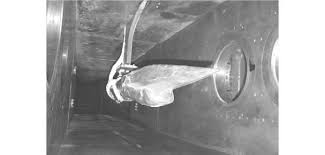
A Ventral Diverterless High Offset S-shaped Inlet at Transonic Speeds Xie Wenzhong*, Guo Rongwei College of Energy and Power Engineering, Nanjing University of Aeronautics and Astronautics, Nanjing 210016, China Received 13 September 2007; accepted 18 December 2007
See it says the cowl position has to be so that the boundary layer stays away from the inlet, check it says as the speed grows beyond Mach 1, the pressure recovery goes down, but mass flow goes up, the original document is a PDF you have to download it but it has a graph that shows the limits of the fixed DSI intake, since it has no bleeding system or bypass doors the pressure recovery goes down, please also check they say F-35 operates at transonic speeds, thus as overscan mentioned those parts in this thread speculate are bleed systems or bypass doors will be logic conclusions from the Chinese document.
As you mentioned chinese nationalist hardly want to see even the evidence by Chinese documents, see it says the intake has its best performance at Mach 1, from that you will see that J-20 like F-35 are to operate in the best ideal speed at Mach 1 and a decent one at Mach 1.7.
Last edited:
- Joined
- 27 December 2005
- Messages
- 17,320
- Reaction score
- 23,861
The document you cite is specifically a Chinese analysis of the F-35's DSI intake. Its as relevant to J-20 as studying the pitot intake of the AMX and concluding the F-16 must likewise be subsonic.
pegasus
I really should change my personal text
- Joined
- 22 March 2019
- Messages
- 303
- Reaction score
- 208
Not necessarily, it is more like the intake of IAI lavi and F-16 or Sepecat jaguar, Mitsubishi F-1 and JH-7, consider while there are differences, in that you are correct, the speed ranges DSI intakes are to operate are very close, the speculation you pointed very well is correct why JF-17 has porous bleed system in the DSI intake bump and cowl? and you translated into J-20, are there differences? yes, but the limits of these intakes are pretty similar and the gains they get are not spectacular but reduced to small gainsThe document you cite is specifically a Chinese analysis of the F-35's DSI intake. Its as relevant to J-20 as studying the pitot intake of the AMX and concluding the F-16 must likewise be subsonic.
plus the article is more for J-10B
see the title
A Ventral Diverterless High Offset S-shaped Inlet at Transonic Speeds Xie Wenzhong*, Guo Rongwei College of Energy and Power Engineering, Nanjing University of Aeronautics and Astronautics, Nanjing 210016, China Received 13 September 2007; accepted 18 December 2007
Last edited:
"And T-90SM is bad because Abrahams stomped T-72M in Iraq"Your onion will be peeled, seriously these claims may work with the chief buyer for Syrian Air Force, not so much for me.
100 missiles, I don’t think, west didnt spend this many on Iraq.
kaiserd
I really should change my personal text
- Joined
- 25 October 2013
- Messages
- 1,665
- Reaction score
- 1,712
I think pegasus's points on optimizing DSI for supersonic performance are highly relevant, however.
A big on-going mystery is the apparently lackluster nature of the J-20's maneuverability. Chinese fanboys usually claim that the PLAAF isn't going to give away the goods as to how agile the J-20 is, but we've been given a strip tease on the J-20's capabilities for years. Likewise, considering that the J-20 is scheduled to be re-engined, why not give enemies a false impression of the J-20's agility under the older Al-31 or WS-10 engines when the WS-15 is waiting in the wings?
Moreover, we know from the J-20's other characteristics than the J-20 SHOULD be relatively maneuverable; i.e, the wing loading is good and the T/W is around the same level as a F-35 at 60% fuel.
One possibility is that the DSI is just optimized for high speeds, i.e, the DSI bump is overly large and reduces air pressure at low subsonic speeds.
The VTech student analysis suggested that with 21.77 meters length and about 13.1 diameter (most accurate numbers are currently about 20.4m length with 12.9 meters wingspan) a shock probe forms at about Mach 2.1, and their estimate is that the J-20 is a Mach 2.1 to Mach 2.5 fighter.
Optimizing a DSI for middling Mach 2 regimes, on the other hand, implies slouch at subsonic speeds.
Something I've pointed out is that with moderate J-20 weight numbers, the J-20 could end up having absurd 1.45 to 1.6 T/W ratios at 60% fuel if WS-10s come to the 180kn range. That implies that the J-20 could simply rely on surplus power at subsonic speeds instead of focusing on high pressure recovery now.
If you're stuck working with poor engines in the 125kn-145kn range when you want a 180kn engine, you have two workarounds. First, you can optimize for low-speed maneuverability a la the Su-57, while sacrificing high-speed performance. When the upgraded engines come in, you now improve both in maneuverability and high-speed performance. Second, you can optimize for high-speed performance while sacrificing low-speed maneuverability.
The question then comes to, when you're running a modern stealth fighter in an arena where most competitors are running 4th generation aircraft, do you optimize for high-speed performance or do you optimize for low-speed performance? Remember, at the end of the day, the J-20 is currently slated to be equipped with only 6 missiles, two of them dogfight missiles. If you assume it'll take 2 missiles to knock down an enemy plane, would you prefer to dogfight or would you prefer BVR combat, where 5th generation aircraft excel in?
Do we currently have any reliable up-to-date sources re: the J-20’s current maneuverability and subsonic (and/or supersonic) performance?
If we do then such conjecture around the role of the DSI in those performance parameters may be warranted.
If not then this conjecture appears somewhat premature, with a lot of “...and if...” accumulating.
So further to the attempts to show otherwise above it now appears to be very evident that the actual current answer to my initial question is very much “No”.
Instead we have conjecture pilled upon conjecture with very little to really root it to reality.
As for “Chinese-fan-boys” they are not very evident on this particular site so I’m not familiar with what they may or may not be claiming.
But I’m afraid much of what is being claimed by some contributors in this topic may also fall into the “fan-boy” category, just of another persuasion.
Of course, if you have an equation you can put any number on one side to calculate the result on the other side. But I am talking about the trend which quellish mentioned. Double the transmitting power only increases range by 18%. So actually increase range by increasing the power is highly inefficient.Do you see that Pt can be any number? the equation does not say Stealth aircraft can not be detected, it simply says Pt is any number, give it any number the results change
Please read very carefully what I said and stop generalizing.you said light can not have creeping wave, the document says bigger object than the wavelength, F-16 is much much bigger than the wavelength of light or radar both are okay for creeping wave.
I said: " "Visible light doesn't curve a full circle around human size object (creeping return) because the wavelength isn't big enough" .
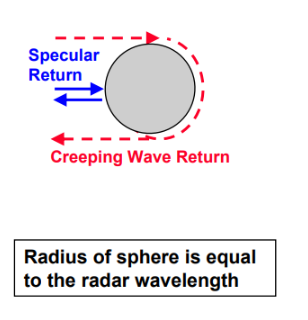
While wave can diffract, the amount of diffraction (how much it can curve around an object) depend on the size of the wavelength versus the object dimension. To have creeping wave return (not the same as surface traveling return and edge diffraction), the wavelength must full fill 2 conditions: the first is that the object is bigger than the wave, the second is that it approaches the object in size (Mie region). Basically, prerequisites are not the same as sufficient conditions. So light doesn't curve a whole cycle around human size object.
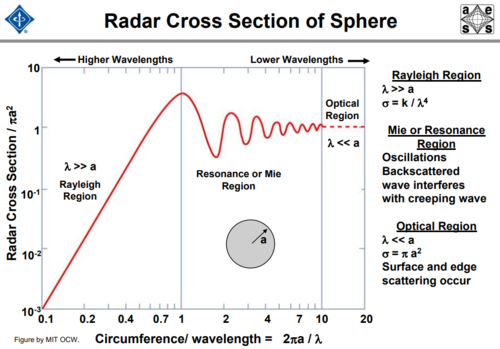
As I have repeated many times, the amount of diffraction is very size dependence, that why
_ They have to divide RCS of an object into 3 separate regions to calculate: Optical/Mie/Rayleigh.
_ The double-slit experiment is done with slits instead of a large gap.
_ Very low-frequency radar is considered better against stealth aircraft than high frequency radar.
_ RCS of a sphere only fluctuated significantly when the wavelength approaches its radius.
I have given you many charts and practical example, you can't just ignore them and insist wave can fully bend around a sphere/object regardless of size.
I do not see the relevant because we actually have the pressure recovery value for F-4 inlet and J-10 DSI inlet, and J-10 is in fact better. So a general explanation of DSI operation doesn't add much to that specific case.You can not see it is relevant simply because it says pressure recovery goes down and Mass flow goes up, do you see the trend?
Last edited:
If I recall correctly those are images from Syria, to date, there are still debates about the number of cruise missiles actually shot down, but didn't they full fill their intended goals?View attachment 620733View attachment 620735
it seems they work well especially since there are multiple sensors and types of radar
Russia claimed successfully intercepted 71 out of 103 missiles fired at Syria
Russia claims 71 of 103 missiles shot down during overnight air strikes Uh, so clearly someone is lying here. If the Russians are telling the truth, I have to say 71/103 is very impressive for missile defense system, which is why it sounds a bit too good to be true. But the whole situation...
The question isn't if stealth aircraft can be detected, of course, they can be detected, everything can be if they are close enough. The goal of stealth is concealing yourself enough that you can attack the enemy before they can attack you. The original question is whether a DSI offers better stealth than a variable inlet, and yes it does because DSI has fewer gaps and discontinuities. On the other hand, a variable inlet is better for high speed.First you are avoiding the question can stealth aircraft be detected? answer yes; it is not who played better its assets like in Serbia, Irak or Yugoslavia.
Now the topic is not who is going to beat who, but rather if stealth is good enough to detect Stealth Intakes such as Caret or DSI types.
All the formulas i have given do not say stealth aircraft can not be detected.
The equations say given the right numbers you will detect any aircraft.
The limitation is how much electricity can generate an aircraft and the radar constraigns of temperature and loses.
So yes, some aircraft have weak radars, Stealth aircraft can fly far from aircraft with radars with low power density and are not going to be detected.
Last edited:
pegasus
I really should change my personal text
- Joined
- 22 March 2019
- Messages
- 303
- Reaction score
- 208
Of course, if you have an equation you can put any number on one side to calculate the result on the other side. But I am talking about the trend which quellish mentioned. Double the transmitting power only increases range by 18%. So actually increase range by increasing the power is highly inefficient.
As I have repeated many times, the amount of diffraction is very size dependence, that why
_ They have to divide RCS of an object into 3 separate regions to calculate: Optical/Mie/Rayleigh.
_ The double-slit experiment is done with slits instead of a large gap.
_ Very low-frequency radar is considered better against stealth aircraft than high frequency radar.
_ RCS of a sphere only fluctuated significantly when the wavelength approaches its radius.
I have given you many charts and practical example, you can't just ignore them and insist wave can fully bend around a sphere/object regardless of size.
I do not see the relevant because we actually have the pressure recovery value for F-4 inlet and J-10 DSI inlet, and J-10 is in fact better. So a general explanation of DSI operation doesn't add much to this case
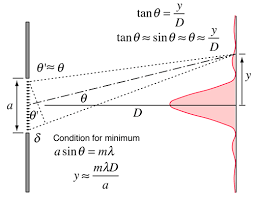
Displacement y = (Order m x Wavelength x Distance D)/(slit width a)
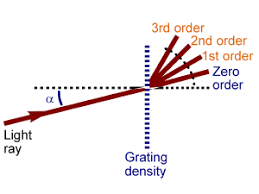
If you see that you can see what is a shadow, you can see intensity changes as the Order m increases
However the nasa document talks about a cylinder, and mentions every tangent it difracts the wavelength until it creeps back to the radar
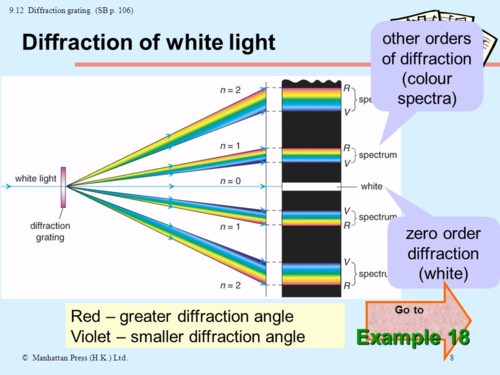
You are saying creeping waves do not exist in light which is incorrect, it is true red light has a greater diffraction angle than violet, however
Displacement y = (Order m x Wavelength x Distance D)/(slit width a) it considers order, but also remember it says each tangent of the circular perimeter of the cylinder does diffract the wavelength and the intensity weakens by the order, but some will go back to the radar
The formulas do not say the stealth aircraft are undetectable, if you want to be realistic it only limits the stealth aircraft detectability by range and by power density as i told you before, F-4 has earlier technology, it might have design flaws.
The main real constraign aircraft have is how much electricity they can generate and how much loses in temperature and scan the radar suffers, the formulas do not say stealth aircraft are undetectable, the real constraign is how much electricity can generate the aircraft
Last edited:
- Joined
- 6 August 2007
- Messages
- 3,640
- Reaction score
- 4,726
The formulas do not say the stealth aircraft are undetectable, if you want to be realistic it only limits the stealth aircraft detectability by range and by power density as i told you before, F-4 has earlier technology, it might have design flaws.
I suggest you actually solve the equation and try different values for each variable and see the result.
The radar range equation tells you at what range an object with the given cross section can be detected by the radar with the given characteristics. Change the radar characteristics and see what happens to the detection range.
If that highlighted part always true regardless of wavelength -object size relationship then can you explain this measurement result: why RCS only fluctuates once wavelength approaches the sphere radius? what do you think the cause of that fluctuation is?If you see that you can see what is a shadow, you can see intensity changes as the Order m increases
However the nasa document talks about a cylinder, and mentions every tangent it difracts the wavelength until it creeps back to the radar
Displacement y = (Order m x Wavelength x Distance D)/(slit width a) it considers order, but also remember it says each tangent of the circular perimeter of the cylinder does diffract the wavelength and the intensity weakens by the order, but some will go back to the radar
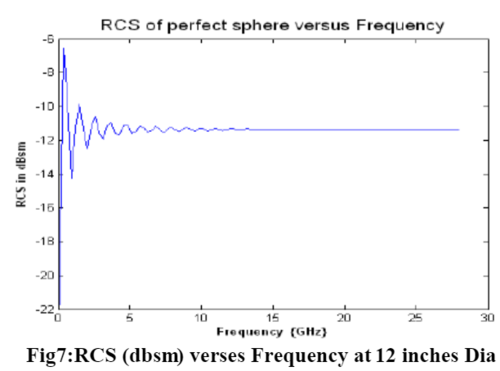
No, I said, creeping wave return characteristic is depending on the relative size of the object vs wavelength, so for human size object, light can't bend/diffract/curve a whole circle around them => no creeping wave return.You are saying creeping waves do not exist in light which is incorrect, it is true red light has a greater diffraction angle than violet, however
By the way, guess what has longer wavelength between red and violet light? Hint: the one with a greater diffraction angle. Can you guess why?
You are literally only one here keep arguing against "stealth aircraft are invisible", which is an argument no one made. We have said many times that stealth is not invisible and it is only to reduce detection range so that you can attack the enemy first. I mean it literally feels like we are saying "the pattern on a cheetah fur make it harder to detect him" but you keep yelling "a cheetah is not invisible". What the point of arguing against the point that no one ever made?The formulas do not say the stealth aircraft are undetectable, if you want to be realistic it only limits the stealth aircraft detectability by range and by power density as i told you before, F-4 has earlier technology, it might have design flaws.
The main real constraign aircraft have is how much electricity they can generate and how much loses in temperature and scan the radar suffers, the formulas do not say stealth aircraft are undetectable, the real constraign is how much electricity can generate the aircraft
pegasus
I really should change my personal text
- Joined
- 22 March 2019
- Messages
- 303
- Reaction score
- 208
RCS of the target is variable upon the wave length, and radar location, the numbers do not say stealth aircraft are undetectable, it simply says constants and variables give different resultsI suggest you actually solve the equation and try different values for each variable and see the result.
The radar range equation tells you at what range an object with the given cross section can be detected by the radar with the given characteristics. Change the radar characteristics and see what happens to the detection range.
pegasus
I really should change my personal text
- Joined
- 22 March 2019
- Messages
- 303
- Reaction score
- 208
RonnyIf that highlighted part always true regardless of wavelength -object size relationship then can you explain this measurement result: why RCS only fluctuates once wavelength approaches the sphere radius? what do you think the cause of that fluctuation is?
No, I said, creeping wave return characteristic is depending on the relative size of the object vs wavelength, so for human size object, light can't bend/diffract/curve a whole circle around them => no creeping wave return.
By the way, guess what has longer wavelength between red and violet light? Hint: the one with a greater diffraction angle. Can you guess why?
Be realistic, the only constraign radars have is electricity, how much wattage can they generate, some radar stations have enough power, plus radars work in networks, data link allows different assets share information.
the whole point is there are some radars that will detect stealth aircraft, if they fly low, the speeds limits the stealth aircraft you fly lower, you fly slower, you fly higher the radars pick you up from higher distances.
The formulas do not limit detectability, what limits detectability is the electricity an aircraft generates, the engines and batteries, how much heat the radar generates, the speed the aircraft flies; faster it flies the window to intercept it is shorter.
DSI intakes are not as people think, radars will see the bump, only is a fantasy it is invisible it is not, with little power density it is not visible, with lots of power density is visible
ok, let put some number in and see what happened when the wavelength doesn't approach the size of the slit. Let put the slit width at 1 meter

Displacement y = (Order m x Wavelength x Distance D)/(slit width a)
If you see that you can see what is a shadow, you can see intensity changes as the Order m increases
See something strange?
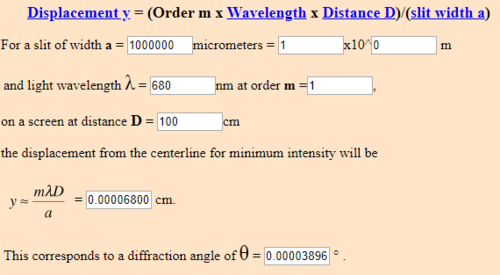
Now let put the slit size closer to the wavelength, do you want to guess why there is such a big difference in displacement distance and diffraction angle of the first case and second case?
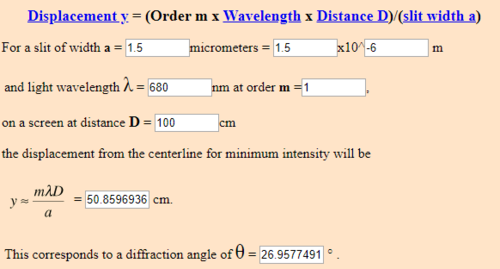
Last edited:
pegasus
I really should change my personal text
- Joined
- 22 March 2019
- Messages
- 303
- Reaction score
- 208
the results are correct however you have not used common sense, if you have those angles how can we see things? basically light is behaving like particles, thus you would not have shadows, however that only is true if you think in macroviews not micro views


plus you do not need slits to get diffraction



Obviously, in the reality objects are full of grates, so light can basically diffract and creep easily, you are not considering DSI intakes are not really smooth,

the microworld has plenty of diffraction Ronny, the aircraft look smooth in the macro world, but for light they are not for that reason you can use short wavelength for radar
plus you have to consider power density

Once you use that you can see why spot lights let us see and why radars can detect aircraft
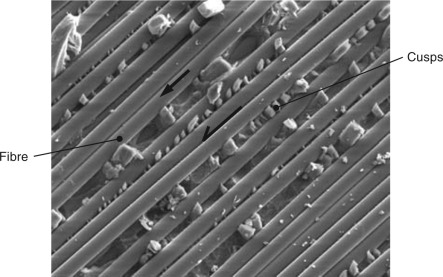
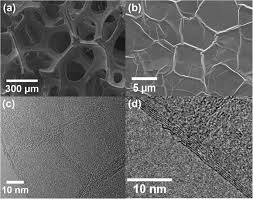
plus you do not need slits to get diffraction
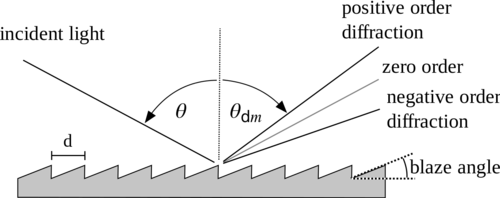
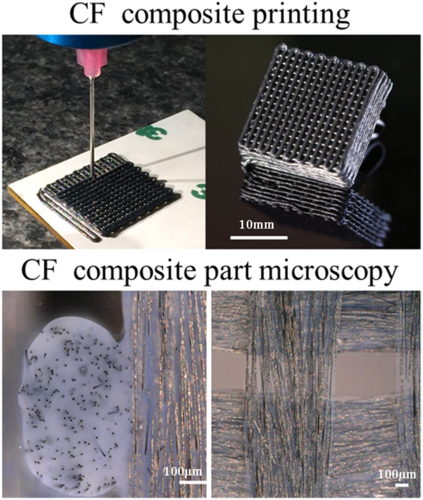

Obviously, in the reality objects are full of grates, so light can basically diffract and creep easily, you are not considering DSI intakes are not really smooth,
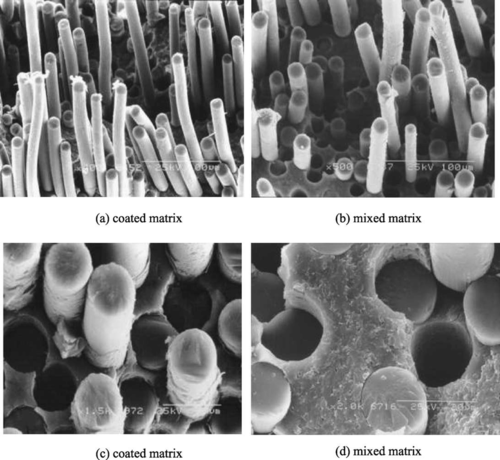
the microworld has plenty of diffraction Ronny, the aircraft look smooth in the macro world, but for light they are not for that reason you can use short wavelength for radar
plus you have to consider power density
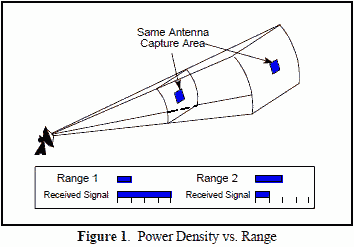
Once you use that you can see why spot lights let us see and why radars can detect aircraft
Last edited:
kaiserd
I really should change my personal text
- Joined
- 25 October 2013
- Messages
- 1,665
- Reaction score
- 1,712
This argument has long since becoming absurd.
“Curved” aircraft can clearly have low radar cross sections (B-2, F-22 etc.)
So why on earth why can’t “curved” aircraft with “curved” DSI as part of their integrated designs not also have low radar cross sections?
One contributors fake-science bluster to peddle a bizarre prejudice around DSI (?) and warmed- up 90’s Russian-fan-boy fantasy are getting far more respect than the merit of their arguments deserves.
“Curved” aircraft can clearly have low radar cross sections (B-2, F-22 etc.)
So why on earth why can’t “curved” aircraft with “curved” DSI as part of their integrated designs not also have low radar cross sections?
One contributors fake-science bluster to peddle a bizarre prejudice around DSI (?) and warmed- up 90’s Russian-fan-boy fantasy are getting far more respect than the merit of their arguments deserves.
pegasus
I really should change my personal text
- Joined
- 22 March 2019
- Messages
- 303
- Reaction score
- 208
3.1 LIDAR - LIGHT DETECTION AND RANGING LIDAR is a Multi-Band and Multi-Static anti-stealth technology. Laser radar can detect stealth targets efficiently because it has short wavelength, high beam quality, high directionality and high measuring accuracy, which helps functions of target identifying, posture displaying and orbit recording. Apart from these, LIDAR holds higher resolution and counter -jamming ability due to its coherence property and ultimately high frequency. The Fig.1 illustrates the difference in image generated using LIDAR and RADARThis argument has long since becoming absurd.
“Curved” aircraft can clearly have low radar cross sections (B-2, F-22 etc.)
So why on earth why can’t “curved” aircraft with “curved” DSI as part of their integrated designs not also have low radar cross sections?
One contributors fake-science bluster to peddle a bizarre prejudice around DSI (?) and warmed- up 90’s Russian-fan-boy fantasy are getting far more respect than the merit of their arguments deserves.
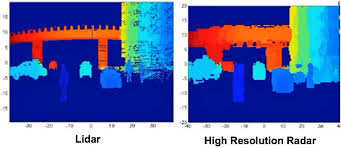
http://www.researchinventy.com/papers/v3i12/D0312015019.pdf
kaiserd
I really should change my personal text
- Joined
- 25 October 2013
- Messages
- 1,665
- Reaction score
- 1,712
3.1 LIDAR - LIGHT DETECTION AND RANGING LIDAR is a Multi-Band and Multi-Static anti-stealth technology. Laser radar can detect stealth targets efficiently because it has short wavelength, high beam quality, high directionality and high measuring accuracy, which helps functions of target identifying, posture displaying and orbit recording. Apart from these, LIDAR holds higher resolution and counter -jamming ability due to its coherence property and ultimately high frequency. The Fig.1 illustrates the difference in image generated using LIDAR and RADARThis argument has long since becoming absurd.
“Curved” aircraft can clearly have low radar cross sections (B-2, F-22 etc.)
So why on earth why can’t “curved” aircraft with “curved” DSI as part of their integrated designs not also have low radar cross sections?
One contributors fake-science bluster to peddle a bizarre prejudice around DSI (?) and warmed- up 90’s Russian-fan-boy fantasy are getting far more respect than the merit of their arguments deserves.
View attachment 620833
http://www.researchinventy.com/papers/v3i12/D0312015019.pdf
How is that in any way relevant?
Trying to be charitable here but looks more and more like irrelevant pseudoscientific “noise” being thrown in to distract from the increasingly bare counter-factual argument you are continuing to make.
I have already given up, been accused of not answering a question, I actually answered in my first post. Etc.3.1 LIDAR - LIGHT DETECTION AND RANGING LIDAR is a Multi-Band and Multi-Static anti-stealth technology. Laser radar can detect stealth targets efficiently because it has short wavelength, high beam quality, high directionality and high measuring accuracy, which helps functions of target identifying, posture displaying and orbit recording. Apart from these, LIDAR holds higher resolution and counter -jamming ability due to its coherence property and ultimately high frequency. The Fig.1 illustrates the difference in image generated using LIDAR and RADARThis argument has long since becoming absurd.
“Curved” aircraft can clearly have low radar cross sections (B-2, F-22 etc.)
So why on earth why can’t “curved” aircraft with “curved” DSI as part of their integrated designs not also have low radar cross sections?
One contributors fake-science bluster to peddle a bizarre prejudice around DSI (?) and warmed- up 90’s Russian-fan-boy fantasy are getting far more respect than the merit of their arguments deserves.
View attachment 620833
http://www.researchinventy.com/papers/v3i12/D0312015019.pdf
How is that in any way relevant?
Trying to be charitable here but looks more and more like irrelevant pseudoscientific “noise” being thrown in to distract from the increasingly bare counter-factual argument you are continuing to make.
What ???the results are correct however you have not used common sense, if you have those angles how can we see things? basically light is behaving like particles, thus you would not have shadows
What can possibly make you think small diffraction angle mean you can't see??. You have shadow literally because light behave more like like particles against big objects. If they always have the same amount of diffraction regardless of object size (aka, always curve a full revolution around the object) then you will be able to see around corner.
Have you already forget about the prerequisite that we talked about earlier?. To be in Mie region, the wavelength must approaches the object size but not bigger than it. With the size shows in the photos , they will be in Rayleigh region with completely different characteristic.however that only is true if you think in macroviews not micro views
View attachment 620818
View attachment 620820
By the way, those photos you posted are taken by an electron microscope, visible light microcrope can't even be used to observe these structures.
When have I or anyone else here ever said you need a slit to get diffraction?plus you do not need slits to get diffraction
Power density reduction due to range is completely irrelevant to what we are discussing, so I don't understand why would you post that photoplus you have to consider power density
View attachment 620825
Once you use that you can see why spot lights let us see and why radars can detect aircraft
pegasus
I really should change my personal text
- Joined
- 22 March 2019
- Messages
- 303
- Reaction score
- 208
the problem Ronny is you are not using common sense, your eyes are radars, passive radars, following your explanation you will not explain why we see.What ???
What can possibly make you think small diffraction angle mean you can't see??. You have shadow literally because light behave more like like particles against big objects. If they always have the same amount of diffraction regardless of object size (aka, always curve a full revolution around the object) then you will be able to see around corner.
Have you already forget about the prerequisite that we talked about earlier?. To be in Mie region, the wavelength must approaches the object size but not bigger than it. With the size shows in the photos , they will be in Rayleigh region with completely different characteristic.
By the way, those photos you posted are taken by an electron microscope, visible light microcrope can't even be used to observe these structures.
When have I or anyone else here ever said you need a slit to get diffraction?
Power density reduction due to range is completely irrelevant to what we are discussing, so I don't understand why would you post that photo
First issue is we see in color, it means the white light once it impacts the surface of an object is diffracted, so if you are in a room where everything is blue, you should not be able to see the white beam of a lamp, why? because light is going straight and no backwards and the diffraction angle is zero nada, got it?if you are outside the room, and the door is open with a door frame of one meter, you first will not see the white beam of light since it means light is going backwards towards your eyes, second, since the diffraction angle is almost nada nothing zero nil light is going straight, thus if a person is inside the room in a corner where you are not illuminating directly first she or he will not see the light. because the diffraction angle is to small.
Second, If the entire room is blue, it means light impacts the walls, roof or floor, while white light difracts becomes blue and that blue light goes to your eyes and you detect the objects as blue, you will not be able to see the white light of your flashlight nor anything that is not straight from the frame of the door or even more the white light of your lamp, will be like a laser.
Is that what happens? no that it does not happen, does your calculations are wrong or your explanation is wrong.
There are two properties of light you are not considering, one lights try to be all the time isotropic and omnidirectional, this is a wave property and product of diffraction, second the room is full of air, there are particles of dust that diffract light, in the microworld light is diffracted in longer angles thus light can illuminate if you have enough power density your room and that is what we do every day when we turn lights in our houses.
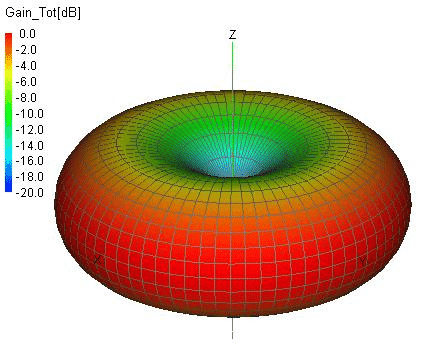
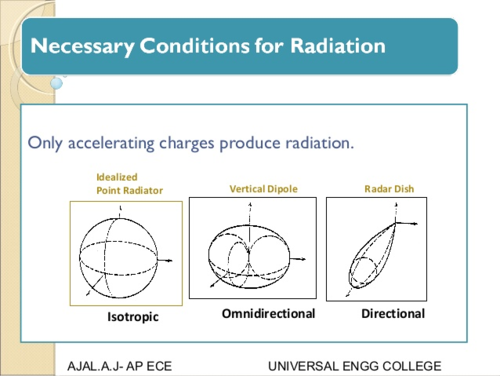
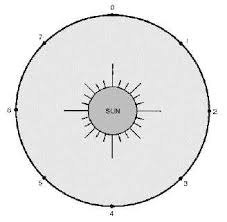

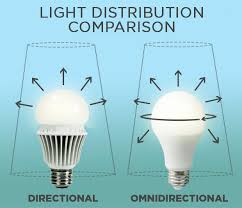
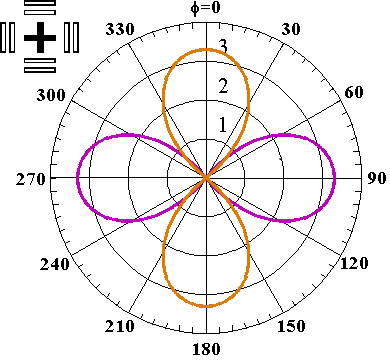
Therefore your explanation is wrong, there are several frequencies radars can use each one has advantages to detect stealth longer wavelengths will require less power density, shorter wavelengths will be more precise like LIDAR
Thus with enough power density, DSI or Caret intakes are pretty visible, you still do not want to admit what the formulas tell you, give enough power density and you will detect stealth aircraft in fact radars do detect them.
Last edited:
kaiserd
I really should change my personal text
- Joined
- 25 October 2013
- Messages
- 1,665
- Reaction score
- 1,712
There is an element of the potential troll-farm going on here; who has so much irrelevant pseudo science bullshit immediately on tap?
While pushing a very Russian-specific perspective way past what would really make much sense if actually engaged in debate.
Hope that’s not the case.
While pushing a very Russian-specific perspective way past what would really make much sense if actually engaged in debate.
Hope that’s not the case.
Last edited:
pegasus
I really should change my personal text
- Joined
- 22 March 2019
- Messages
- 303
- Reaction score
- 208
An incident plane wave is diffracted at a point of tangency (designated A) on the target. A portion of the diffracted energy is trapped at this point, resulting in a wave which propagates on the surface of the target, shedding energy by radiation as it progresses. Finally, this wave reradiates at B in the scattering direction of interest. This "creeping wave" can thus be described by diffraction coefficients at the points of diffraction and reradiation, by an attenuation factor to account for radiation losses, and by a description of the ray path geometry on the target traversed by the creeping wave.There is an element of the potential troll-farm going on here; who has so much irrelevant pseudo science bullshit immediately on tap?
While pushing a very Russian-specific perspective way past what would really make much sense if actually engaged in debate.
Hope that’s not the case.
https://apps.dtic.mil/dtic/tr/fulltext/u2/669372.pdf
Light can therefore bend around the corner of an object by riding the curved surface of the object. For a smooth surface, the light can travel along the surface for a relatively long distance. However, roughness, irregularities, cracks, bumps, and seams on the object's surface interrupt the coupling between light and the electric currents in the surface, so that the surface waves tends to scatter off into space at such obstacles instead of continuing to ride the surface. In optics, light waves riding the surface of a conductive object are called "surface plasmons". In radar, such waves are called "creeping waves" or simply "surface waves". In radar images, this creeping wave effect can lead to physically important ghost images or echo images of the object, because it takes longer for the creeping wave to return to the receiver than the main reflected wave.
https://wtamu.edu/~cbaird/sq/2014/02/07/can-light-bend-around-corners/
Last edited:
Neither my explanation or calculation is wrongthe problem Ronny is you are not using common sense, your eyes are radars, passive radars, following your explanation you will not explain why we see.
First issue is we see in color, it means the white light once it impacts the surface of an object is diffracted, so if you are in a room where everything is blue, you should not be able to see the white beam of a lamp, why? because light is going straight and no backwards and the diffraction angle is zero nada, got it?if you are outside the room, and the door is open with a door frame of one meter, you first will not see the white beam of light since it means light is going backwards towards your eyes, second, since the diffraction angle is almost nada nothing zero nil light is going straight, thus if a person is inside the room in a corner where you are not illuminating directly first she or he will not see the light. because the diffraction angle is to small.
Second, If the entire room is blue, it means light impacts the walls, roof or floor, while white light difracts becomes blue and that blue light goes to your eyes and you detect the objects as blue, you will not be able to see the white light of your flashlight nor anything that is not straight from the frame of the door or even more the white light of your lamp, will be like a laser.
Is that what happens? no that it does not happen, does your calculations are wrong or your explanation is wrong.
Firstly, you can see the beam of light, because there are the dust particles in the air, which can reflect the light in all direction when the beam hit them.
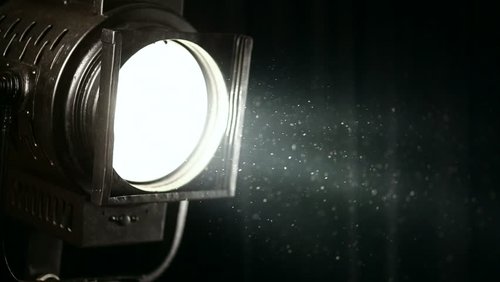
Secondly, same as the first, you can see the while beam of light because there are dust particles in the air, you will not see the beam with the air was 100% clean. Besides, the while light from your lamp will not be like a laser. Laser is monochromatic and coherent while your lamp is often omi directional.
Thirdly, the person inside the room in a corner will still see the light when you not illuminating him directly because when you shine a light at the wall there will be specular backscatter.
You want to prove that light can always creeping a whole revolution around object regardless of frequency-object size relation? ok take a soccer ball, put it 1 cm in front of your camera lens, then point them toward the sun. If you can still take the photo of the sun, then you have prove your point. If the diffraction is actually enough for creeping wave, then the light would have curve about the ball and come to your camera, giving you the full image of the sun.
First of all, the first two photos you posted are not light, they are the radiation pattern of radiowave. The first photo is the radiation pattern of half wave diopole, it is not even isotropic since we can clearly see the horizontal component is 100 times higher in magnitude. The second photo is the radiation pattern of various antenna, which again not related to light at all. The rest of your photos are just light bulb which are omnidirectional due to their design and has nothing to do with the property of light itself. You can easily make a light source that is not omnidirectional, such as the flashlight or concert stage lightThere are two properties of light you are not considering, one lights try to be all the time isotropic and omnidirectional, this is a wave property and product of diffraction, second the room is full of air, there are particles of dust that diffract light, in the microworld light is diffracted in longer angles thus light can illuminate if you have enough power density your room and that is what we do every day when we turn lights in our houses.
View attachment 620839
View attachment 620843
View attachment 620844
View attachment 620840
View attachment 620841
Therefore your explanation is wrong, there are several frequencies radars can use each one has advantages to detect stealth longer wavelengths will require less power density, shorter wavelengths will be more precise like LIDAR
Second of all, you do not need reflection and diffraction from dust particles in your room to be able to see. The light from your lamp and tube light will be reflected back from your wall and various furniture and their surface aren't even smooth so light can be reflected in many dirrections.

Given enough light and close enough distance, an ant and an elephant are both visible, that doesn't mean they are equally visible at all range. The same goes for DSI vs variable inlet. Besides, I have never said stealth aircraft are invisible so stop trying to strawman my argument, that not going to work. And why do you keep ignoring my questions? Please answer them first.Thus with enough power density, DSI or Caret intakes are pretty visible, you still do not want to admit what the formulas tell you, give enough power density and you will detect stealth aircraft in fact radars do detect them.
If wave can always curve a full circle around any particular object regardless of the wavelength size versus the object size then
_ Why do they have to divide RCS of an object into 3 separate regions to calculate: Optical/Mie/Rayleigh?
_ Why the double-slit experiment is done with slits instead of a large gap ?
_ Why very low-frequency radar is considered better against stealth aircraft than high frequency radar?
_ Why RCS of a sphere only fluctuated significantly when the wavelength approaches its radius.?
_ Why covering your camera with a soccer ball stopping you from taking a photo of the sun?
Last edited:
Do you actually read your own source? I feel like you don't because there are many things in there disagree with your opinion and support mineLight can therefore bend around the corner of an object by riding the curved surface of the object. For a smooth surface, the light can travel along the surface for a relatively long distance. However, roughness, irregularities, cracks, bumps, and seams on the object's surface interrupt the coupling between light and the electric currents in the surface, so that the surface waves tends to scatter off into space at such obstacles instead of continuing to ride the surface. In optics, light waves riding the surface of a conductive object are called "surface plasmons". In radar, such waves are called "creeping waves" or simply "surface waves". In radar images, this creeping wave effect can lead to physically important ghost images or echo images of the object, because it takes longer for the creeping wave to return to the receiver than the main reflected wave.
https://wtamu.edu/~cbaird/sq/2014/02/07/can-light-bend-around-corners/
From the source above:
https://wtamu.edu/~cbaird/sq/2014/02/07/can-light-bend-around-corners/In general, a light beam spreads out more (turns the corner more) if the beam has a narrow beam width compared to its wavelength. Light can therefore be made to spread out more by reducing the beam width or by increasing the wavelength of the light. The wavelength of visible light is so small that you have to use very narrow beams of visible light in order to notice its diffraction. Such narrow beams are typically obtained by running light through a very narrow slit. For large-wavelength light such as radio waves, the bending of the wave around human-scale objects is much stronger. Note that the light from a flashlight spreads out not because of diffraction. It spreads out because the mirror in a flashlight is specifically designed to bounce light in different directions. Also, note that the fuzziness of shadows in everyday life is not caused by diffraction, but is instead caused by the fact that an extended light source creates many, slightly-offset, shadows of the object which blur together.
pegasus
I really should change my personal text
- Joined
- 22 March 2019
- Messages
- 303
- Reaction score
- 208
you are wrong because you are mixing concepts, the persons see the light because the light is a wave, in fact it is not a particle, thus the light follows a tendency to go isotropicNeither my explanation or calculation is wrong
Firstly, you can see the beam of light, because there are the dust particles in the air, which can reflect the light in all direction when the beam hit them.
Secondly, same as the first, you can see the while beam of light because there are dust particles in the air, you will not see the beam with the air was 100% clean. Besides, the while light from your lamp will not be like a laser. Laser is monochromatic and coherent while your lamp is often omi directional.
Thirdly, the person inside the room in a corner will still see the light when you not illuminating him directly because when you shine a light at the wall there will be specular backscatter.
You want to prove that light can always creeping a whole revolution around object regardless of frequency-object size relation? ok take a soccer ball, put it 1 cm in front of your camera lens, then point them toward the sun. If you can still take the photo of the sun, then you have prove your point. If the diffraction is actually enough for creeping wave, then the light would have curve about the ball and come to your camera, giving you the full image of the sun.
Isotropic Radiation
Some radiation sources radiate energy equally in all directions. Radiation of this type is known as isotropic radiation. We all know the Sun radiates energy in all directions.
https://www.radartutorial.eu/06.antennas/Isotropic Radiation.en.html
radars like light bulbs can be directional or omnidirectional
DIRECTIONALITY
Due to their small form factor, LEDs present the best of both worlds for lighting design. They can be used to mimic the directionality of PAR, BR and MR lamps or be combined to duplicate the omnidirectional nature of fluorescent and incandescent sources.
https://greencreative.com/led-101/about-led/
You other mistake is to claim is light bends just by a single tangent diffraction, which is not the case, a circle or a cylinder does not have a single tangent
These rays are produced by incident rays which are tangent to the surface of the body. Each tangent ray splits at the point of tangency with one part continuing along the path of the incident ray and the other traveling along a geodesic on the surface of the body. At each following point, it splits again with one part traveling along the geodesic and the other reradiating along a tangent to the geodesic. rays are produced, one of which is reradiated at each point of the geodesic.
https://ntrs.nasa.gov/archive/nasa/casi.ntrs.nasa.gov/19700009872.pdf
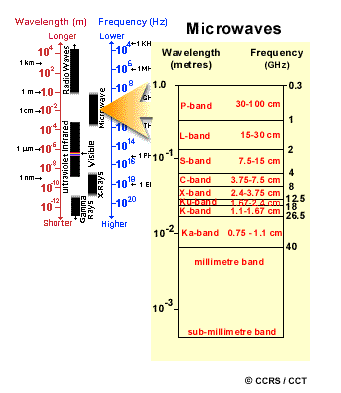
If creeping waves are not posible in light therefore should not be possible to have them in radar either, since the ones mostly used to for stealth masking are pretty small, and you are requiring according to your interpretation, that only a single diffraction of a single tangent radar of waves should we use.
The article mention, not a single diffraction, but many many diffraction of tiny tangents, since circles can have so many that the wave will creep.
Longer wavelengths generate a bigger RCS because of resonance
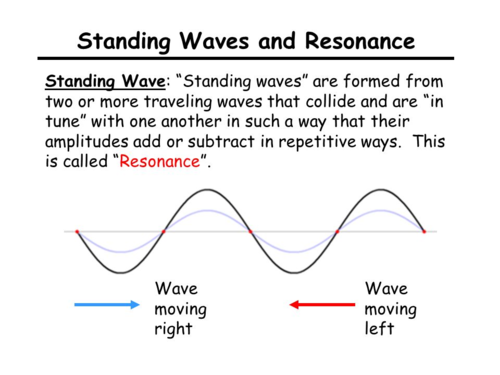
But aircraft RCS does not necessarily grow linearly. As surface-wave effects grow, their phases can interfere constructively or destructively with specular reflections. This phenomenon is illustrated in simple form with a sphere (see figure below). As wavelength grows relative to the circumference, the creeping wave circling the sphere grows continuously, but its phase interference with the specular return varies. This causes the sphere’s RCS to undulate, with successively higher peaks corresponding to phase matches between the specular return and the strengthening creeping wave. This phenomenon is known as “Mie scattering” and this regime —where the wavelength is between one and 1/10th the size of the structure—is known as the “resonance region.” Maximum RCS is often reached when the wavelength reaches the approximate size of the structure
Last edited:
I am sure that I am not wrong at all given that not only I can give not just one but 7 examples to support my point, even the diffraction angle equation you cited earlier also support my claim. On the other hand, you still haven't made any attempt to answer any of the questions I asked many times:you are wrong because you are mixing concepts
If wave can always curve a full circle around any particular object regardless of the wavelength size versus the object size then
_ Why do they have to divide RCS of an object into 3 separate regions to calculate: Optical/Mie/Rayleigh?
_ Why the double-slit experiment is done with slits instead of a large gap ?
_ Why very low-frequency radar is considered better against stealth aircraft than high frequency radar?
_ Why RCS of a sphere only fluctuated significantly when the wavelength approaches its radius.?
_ Why covering your camera with a soccer ball stopping you from taking a photo of the sun?
Please answer these questions instead of going randomly all over the place
I don't see how the Sun or LED light is in any way related to "wave diffraction versus object size" topic. Like @kaiserd said, it start to feel like you adding random noise to distract from the increasingly bare counter-factual argument. Nevermind that, what makes you think light have the tendency to go isotropic?? and how does that even related to creeping wave return?the persons see the light because the light is a wave, in fact it is not a particle, thus the light follows a tendency to go isotropic
Isotropic Radiation
Some radiation sources radiate energy equally in all directions. Radiation of this type is known as isotropic radiation. We all know the Sun radiates energy in all directions.
https://www.radartutorial.eu/06.antennas/Isotropic Radiation.en.html
DIRECTIONALITY
Due to their small form factor, LEDs present the best of both worlds for lighting design. They can be used to mimic the directionality of PAR, BR and MR lamps or be combined to duplicate the omnidirectional nature of fluorescent and incandescent sources.
radars like light bulbs can be directional or omnidirectional
Where did I say "light bends by a single tangent diffraction"?. Do not strawman my argument.You other mistake is to claim is light bends just by a single tangent diffraction, which is not the case, a circle or a cylinder does not have a single tangent
These rays are produced by incident rays which are tangent to the surface of the body. Each tangent ray splits at the point of tangency with one part continuing along the path of the incident ray and the other traveling along a geodesic on the surface of the body. At each following point, it splits again with one part traveling along the geodesic and the other reradiating along a tangent to the geodesic. rays are produced, one of which is reradiated at each point of the geodesic.
https://ntrs.nasa.gov/archive/nasa/casi.ntrs.nasa.gov/19700009872.pdf
If creeping waves are not posible in light therefore should not be possible to have them in radar either, since the ones mostly used to for stealth masking are pretty small, and you are requiring according to your interpretation, that only a single diffraction of a single tangent radar of waves should we use.
The article mention, not a single diffraction, but many many diffraction of tiny tangents, since circles can have so many that the wave will creep.
My claim is very simple: How much wave bend/diffraction/curve around any particular object, depend on the wavelength size verus the size of the object. To have creeping wave return, the wave must approach the size of object.
Ok, so you finally understand what I have been explaining in the last 5-6 posts. Let me post the same photo against since they illustrate my point very clearly.Longer wavelengths generate a bigger RCS because of resonance
View attachment 620849
But aircraft RCS does not necessarily grow linearly. As surface-wave effects grow, their phases can interfere constructively or destructively with specular reflections. This phenomenon is illustrated in simple form with a sphere (see figure below). As wavelength grows relative to the circumference, the creeping wave circling the sphere grows continuously, but its phase interference with the specular return varies. This causes the sphere’s RCS to undulate, with successively higher peaks corresponding to phase matches between the specular return and the strengthening creeping wave. This phenomenon is known as “Mie scattering” and this regime —where the wavelength is between one and 1/10th the size of the structure—is known as the “resonance region.” Maximum RCS is often reached when the wavelength reaches the approximate size of the structure
You said longer wavelength can generate bigger RCS because of resonance. This resonance like I have explained before is the interference between creeping wave return and specular return. In shorts,once part of the wave curve a whole revolution around the object will interfere with the specular reflection from the object. If the interference is constructive, the RCS is higher. If the interference is destructive the RCS is lower. So, if we consider your theory correct: "wave can always curve a full cycle around the object (creeping return) regardless of the object size" then does why this resonance only happen in the Mie region?
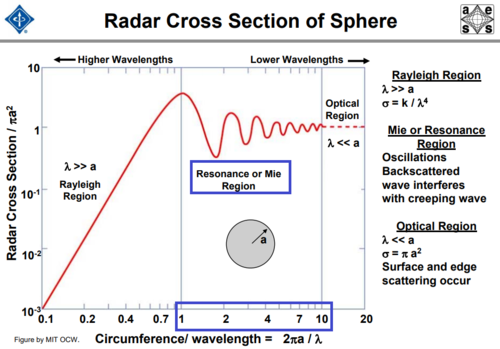
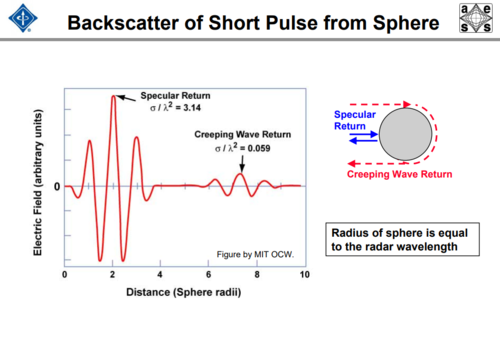
pegasus
I really should change my personal text
- Joined
- 22 March 2019
- Messages
- 303
- Reaction score
- 208
Where did I say "light bends by a single tangent diffraction"?. Do not strawman my argument.
My claim is very simple: How much wave bend/diffraction/curve around any particular object, depend on the wavelength size versus the size of the object. To have creeping wave return, the wave must approach the size of object.
CREEPING-WAVE DIFFRACTION CONCEPT When a wave is incident upon an opaque object which is large compared to the wavelength, a shadow is formed. However, some radiation penetrates into the shadow region due to diffracted rays as shown in figure
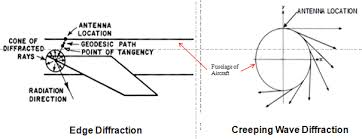
https://ntrs.nasa.gov/archive/nasa/casi.ntrs.nasa.gov/19700009872.pdf
are not those J-20 DSI intake bumps more similar to the oval fuselage figure?
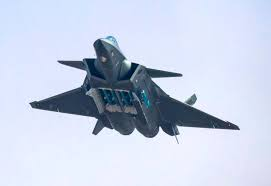
the article says large, not almost the same size of the wavelength as you are saying
while this an example from sound waves explains what you are trying to say
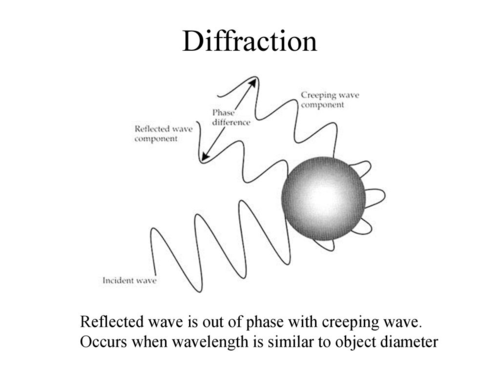
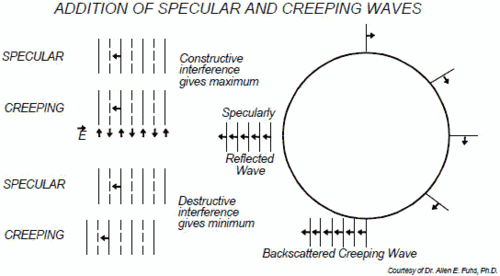
There isn't any point to continue this discussion if you keep avoiding my questions despite me asking them repeatedly. To be frank, if you truly believe that you are correct then you won't have to ignore them while posting various unrelated things. At this point, this topic changed from an interesting discussion into a waste of timeCREEPING-WAVE DIFFRACTION CONCEPT When a wave is incident upon an opaque object which is large compared to the wavelength, a shadow is formed. However, some radiation penetrates into the shadow region due to diffracted rays as shown in figure
View attachment 620858
https://ntrs.nasa.gov/archive/nasa/casi.ntrs.nasa.gov/19700009872.pdf
are not those J-20 DSI intake bumps more similar to the oval fuselage figure?
the article says large, not almost the same size of the wavelength as you are saying, while this an example from sound waves explains what you are trying to say
pegasus
I really should change my personal text
- Joined
- 22 March 2019
- Messages
- 303
- Reaction score
- 208
I understand what you are trying to say however you are using a generalization without proves.There isn't any point to continue this discussion if you keep avoiding my questions despite me asking them repeatedly. To be frank, if you truly believe that you are correct then you won't have to ignore them while posting various unrelated things. At this point, this topic changed from an interesting discussion into a waste of time
The article does not say the creeping wave needs to be the same size of the object, that is a conjecture you do, you first need to prove light or microwaves do not create creeping waves when bouncing from objects like humans, i know they do there are studies focused in microwaves creeping from humans because such waves are used for telecommunications and electronic equipment like i phones, thus studies have been done to see creeping waves from cell phones.
I am not dodging your questions, simply you are not listening what the article says basically it says the creeping waves turns 180 degrees because of tangents, and cylinders have a lot of tangents plus it says the object should be larger than the wavelength, you are not considering that aspect.
Further more resonance is result of two waves one creeping, one specular, that are interacting in a very small space thus the chances of resonance is higher, there are light creeping waves, the surfaces of objects are not smooth.
see the metal has fatigue from an aircraft it is not smooth, they will act as grates

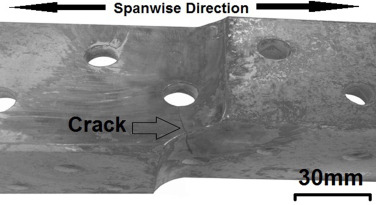
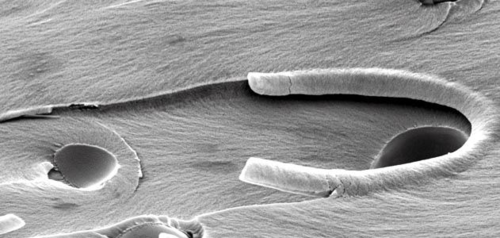
https://www.airspacemag.com/flight-today/how-things-work-self-healing-airplanes-35558146/
https://www.sciencedirect.com/science/article/pii/S2213290216300074
Diffraction occurs in radar frequencies thus creeping waves such occur too in all frequencies, but longer wavelength have a tendency to resonate more, you have to prove that is not the case, however the article only says larger than the object and tangents splitting the wave into one diffracting and another going straight
I am sorry what again?I understand what you are trying to say however you are using a generalization without proves.
I am the only one who has done the calculations, I am the only one actually put number into the equation you gave, I am the one who can give multiple real life example that you are unable to prove with your theory. How is that generalization?. What calculations have you done to make your point?. You just put up some convoluted equation without actually trying them out.
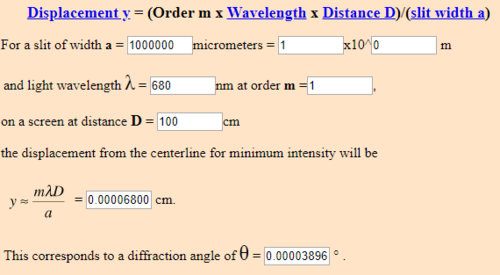
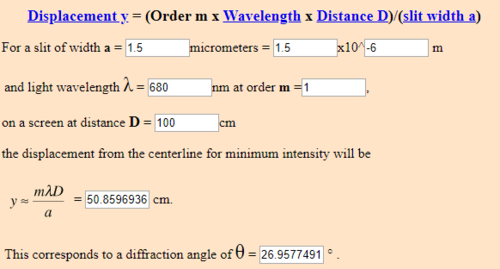
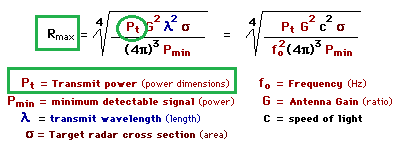
First of all, it is not a conjecture I created. I have shown it to you many times both with practical example in case of a sphere RCS measurement and in the theoretical example in case of official separation of RCS region: Optical/Mie/Rayleigh. Second of all, cell phone use 900 Mhz-1900 Mhz frequency, so its wavelength is between 33-17 cm which make them 825000 times longer than the optical light wavelength at 400- 800 nanometers.The article does not say the creeping wave needs to be the same size of the object, that is a conjecture you do, you first need to prove light or microwaves do not create creeping waves when bouncing from objects like humans, i know they do there are studies focused in microwaves creeping from humans because such waves are used for telecommunications and electronic equipment like i phones, thus studies have been done to see creeping waves from cell phones.
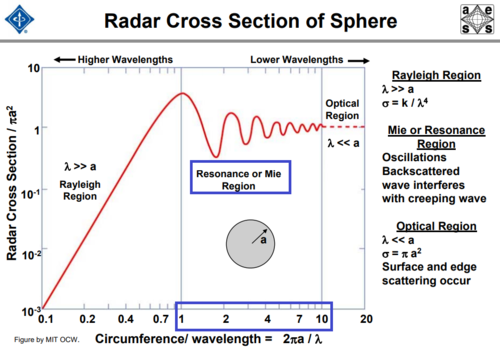
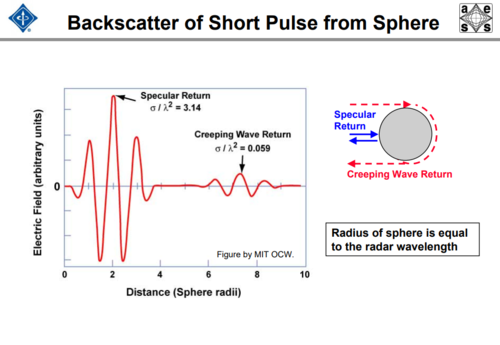
I do consider that aspect, I was the one explain to you what happens if the object is bigger than the wave aka Rayleigh region.I am not dodging your questions, simply you are not listening what the article says basically it says the creeping waves turns 180 degrees because of tangents, and cylinders have a lot of tangents plus it says the object should be larger than the wavelength, you are not considering that aspect.
see the metal has fatigue from an aircraft it is not smooth, they will act as grates
You are saying wave can always creeping a full revolution around a sphere regardless of the wavelength versus that sphere size, then explain my question. Why RCS of a sphere only fluctuated significantly when the wavelength approaches its radius.? if your theory is correct = wave can always creep around the same regardless of frequency => the fluctuation should be the same regardless of the exact frequency. Since that does not happen, we know easily that your theory is wrong.
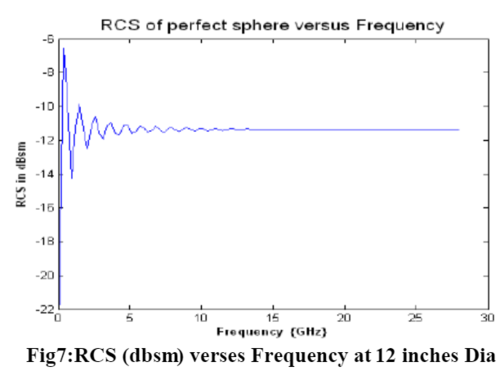
Yes we all know resonance is the result of creeping and specular wave interfered, I literally brought that up right at my second post of this thread. And do not even try to strawman my argument. I did not say diffraction can't occur in all frequencies or even that creeping wave can only occur in some frequencies. I made my point very specific, the amount of diffraction is depending on the object size versus the wavelength size. You get creeping wave return when the wavelength size approaches the object size => the angle of diffraction is very high. That why RCS of a sphere fluctuated when wavelength approaches its diameter and also why very low-frequency radar is better against stealth aircraft than high-frequency one.Further more resonance is result of two waves one creeping, one specular, that are interacting in a very small space thus the chances of resonance is higher, there are light creeping waves, the surfaces of objects are not smooth.
Diffraction occurs in radar frequencies thus creeping waves such occur too in all frequencies, but longer wavelength have a tendency to resonate more, you have to prove that is not the case, however the article only says larger than the object and tangents splitting the wave into one diffracting and another going straight
No, I don't have to prove a negative and don't try to put a trap. You have to prove that longer wavelength has a tendency to resonate more but not due to the wavelength-object size relationship that I have been laid out in the last 2 pages. I have been saying all along that the amount of diffraction/bend/curve is higher if the wavelength approaches the object dimension, more diffraction = more chance for creeping wave return. More creeping wave return = more interference with specular return => more resonance.but longer wavelength have a tendency to resonate more, you have to prove that is not the case
If my argument isn't correct then what is the cause of high resonance at low frequency?
pegasus
I really should change my personal text
- Joined
- 22 March 2019
- Messages
- 303
- Reaction score
- 208
I am sorry what again?I understand what you are trying to say however you are using a generalization without proves.
I am the only one who has done the calculations, I am the only one actually put number into the equation you gave, I am the one who can give multiple real life example that you are unable to prove with your theory. How is that generalization?. What calculations have you done to make your point?. You just put up some convoluted equation without actually trying them out.
First of all, it is not a conjecture I created. I have shown it to you many times both with practical example in case of a sphere RCS measurement and in the theoretical example in case of official separation of RCS region: Optical/Mie/Rayleigh. Second of all, cell phone use 900 Mhz-1900 Mhz frequency, so its wavelength is between 33-17 cm which make them 825000 times longer than the optical light wavelength at 400- 800 nanometers.
First let us cool down, we are in no need to convince each other by force.
Let me say your calculations do not prove what is a creeping wave, in no way you have done that. the equation you used only proves an angle and at short distance (1 meter) and few orders, in fact you only calculated one order, the formula it is basically to calculate the distance of any order from the middle order 0, it does not prove what is a creeping wave so you have not proved your conjecture.
you did not prove what is a creeping wave by no means, the NASA documents i gave you, gives a basic definition, but if you open the link is full of differential equations, i only quoted the basic non mathematical definition they gave:
If you look at this laser diffraction it has more than one order
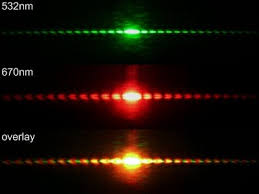
The basic definition of the NASA document is tangents are the equivalents to slits, so the wave is diffracting in each and every tangent that a 180 deg a half circumference has, basically there are plenty of slits, not only one like you are trying to portrait.
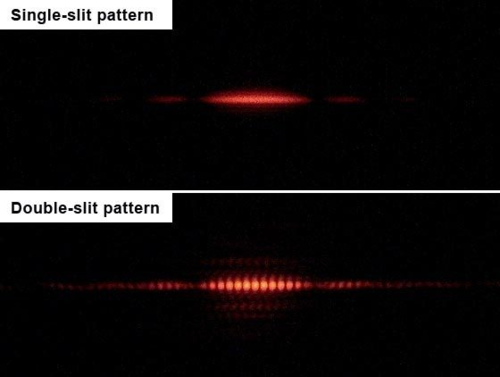
Now regardless who is right, it is pretty obvious the chines of F-22 do not work for long wavelength thus they are designed for microwaves, which can go from cm to less than millimetres, so an F-22 is pretty big since each chine is pretty large, 1,5 to 2 meters, so the chines do work for creeping waves in short wavelengths.
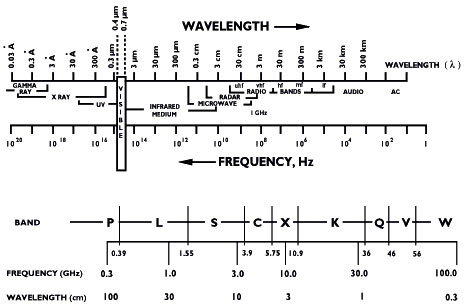
Now your statement was DSI intakes are smooth i told you it does not matter, with lidars or powerful radars they become visible and closer to the radar they will be pretty visible.
You can not prove the radar range formula say stealth means invisibility, the only thing i said, is the only real limitation is the electricity an aircraft can provide to its radar, but ground radars do not have such limitations and aircraft work with networks, to exemplify it, imaging you have a hall with many lamps, each light is helping you to see, passive radars basically use that, any frequency they are using to see.
Last edited:
kaiserd
I really should change my personal text
- Joined
- 25 October 2013
- Messages
- 1,665
- Reaction score
- 1,712
To anyone who is still listening is the point peagsus trying to make that all “stealth” planes are supposedly more easily tracked than everyone who isn’t wearing a Su-57 t-shirt thinks they are (which appears misguided at best), or is it still all specifically tied up with -anti-DSI-obsession (which makes it concerning from mental well-being perspective, at best)?
pegasus
I really should change my personal text
- Joined
- 22 March 2019
- Messages
- 303
- Reaction score
- 208
https://findpatent.ru/patent/250/2502643.htmlTo anyone who is still listening is the point peagsus trying to make that all “stealth” planes are supposedly more easily tracked than everyone who isn’t wearing a Su-57 t-shirt thinks they are (which appears misguided at best), or is it still all specifically tied up with -anti-DSI-obsession (which makes it concerning from mental well-being perspective, at best)?
The shape of the airframe reduces the number of directions that radar signals are reflected in with the angles of sweep of the wings and the tail plane's leading and trailing edges, the edges of the air intakes and hatch covers being reduced and deflected from the aircraft's axis. Viewing the aircraft from the flank, the fuselage sides, lateral edges of the air intakes and vertical empennage are all deflected at the same angle.
Some openings and slots on the airframe's surface - such as the boundary-layer bleeds on the sides of the air intakes and the openings on the upper fuselage immediately aft of the cockpit - are covered with a thick grid, featuring a mesh of less than one quarter of the wavelength of a search radar, which reduces the reflections from these uneven surfaces. Gaps between the airframe elements are filled with conducting sealants, while the glazing of the cockpit canopy is metallised.
https://findpatent.ru/patent/250/2502643.html
The technical result, which is aimed invention is to provide a prob is gnosti change the angle of the solution steps of one of the arrow-shaped wedges of inhibition and minimum of the cross-section area of the inlet (throat) without education in its channel undesirable longitudinal cracks and stuttering mobile elements. Such regulation would, in turn, to ensure the stable operation of the engine on all flight modes of the aircraft up to Mach number M=3.0 recoveries total pressure at the engine inlet at a level not lower than the standard for adjustable flat intakes and total heterogeneity of the stream below the maximum permitted value ("Aerodynamics, stability and control of a supersonic aircraft", Ed. by Gsena. - M.: Nauka. Fizmatlit, 1998). Thus due to the parallelogram shape of the entrance of the air intake on the front view and make all edges sweep reduced radar visibility of the object on which it is installed. The greatest effect of reducing the radar signature will be achieved when the edge of the inlet parallel to any members of the object (front or rear edges of the wing, empennage, and others).
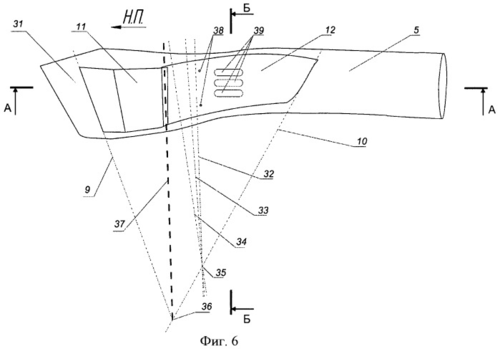
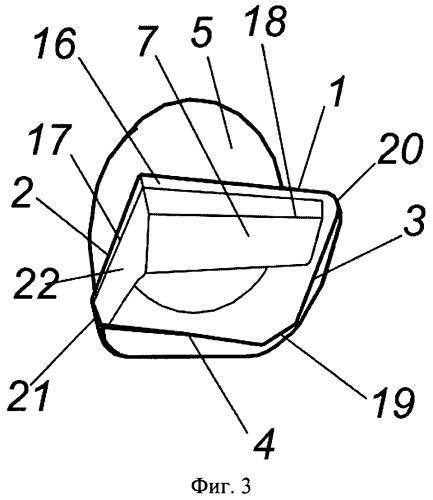
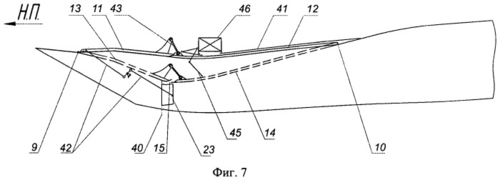
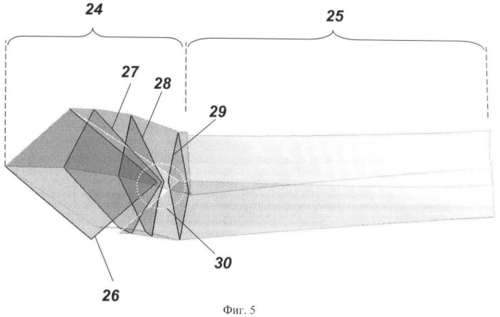
https://findpatent.ru/img_show/11172942.html
https://findpatent.ru/patent/246/2460892.html
https://russianpatents.com/patent/246/2460892.html
© RussianPatents.com - patent search, 2012-2019
The diverterless supersonic inlet (DSI) of the Lockheed Martin joint strike fighter (JSF), which operates mostly at transonic speeds, has been designed taking whatever is mentioned above into enough account. Fundamental researches on this inlet configuration have been continued since the mid-1990s.
The inlet cowl lips are so designed as to allow most of boundary layer flow to spill out of the aft notch. The DSI structure complexity has been greatly reduced by the removal of moving parts, a boundary layer diverter and a bleed or bypass system thus decreasing the aircraft’s empty weight, production cost, and requirements of maintenance-supporting equipment[1-2].
the effects of the free stream Mach number on the mass flow coefficient and total pressure recovery when D = 0º and E = 0º. As the free stream Mach number increases, the mass flow coefficient decreases, and, after reaching the minimum at Mach number 1.000, it increases. Fig.7 also shows that the total pressure rises and remains constant when the free stream Mach number is up from 0.600 to 1.000, and, afterwards, drops sharply while the free stream Mach number approaches the supersonic.
4 Conclusions A wind-tunnel test of a ventral diverterless high offset S-shaped inlet has been carried out to investigate the aerodynamic characteristics at transonic speeds. Some conclusions can be drawn as follows: (1) There is a large region of low total pressure at the lower part of the inlet exit caused by the counter-rotating vortices formed at the second turn of the S-shaped duct. (2) The performances of the inlet reach almost the highest at Mach number 1.000. This renders the propulsion system able to work with high efficiency in terms of aerodynamics. (3) As the mass flow coefficient increases, the total pressure recovery decreases; the distortion increases at Ma0 = 0.850, but fluctuates at Ma0 = 1.000 and 1.534. (4) The total pressure recovery increases slowly first, and then remains unchanged as the Mach number rises from 0.600 to 1.000. (5) The performances of the inlet are generally insensitive to angles of attack from –4º to 9.4º and yaw angles from 0º to 8º at Mach number 0.850, and angles of attack from –2º to 6º and yaw angles from 0º to 5º at Mach number 1.534.
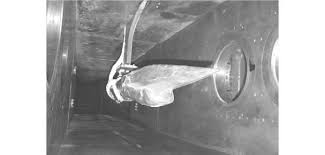
A Ventral Diverterless High Offset S-shaped Inlet at Transonic Speeds Xie Wenzhong*, Guo Rongwei College of Energy and Power Engineering, Nanjing University of Aeronautics and Astronautics, Nanjing 210016, China Received 13 September 2007; accepted 18 December 2007
And you can clearly see the intensity decrease dramatically as the order number increase so the smaller the angle between each order to the middle order, the quicker the intensity reached 0. Basically the bigger your object compared to the wave, the less diffraction the wave will have when it hit the object, the less likely you have creeping wave. This is quite clear when looking at the RCS value of a sphere vs frequency. At high frequency, there is basically no creeping wave to interfered with specular return, but once the wavelength approaches the sphere dimension, we see a sharp increase in RCS fluctuation range because the creeping wave interfered with the specular return.First let us cool down, we are in no need to convince each other by force.
Let me say your calculations do not prove what is a creeping wave, in no way you have done that. the equation you used only proves an angle and at short distance (1 meter) and few orders, in fact you only calculated one order, the formula it is basically to calculate the distance of any order from the middle order 0, it does not prove what is a creeping wave so you have not proved your conjecture.
you did not prove what is a creeping wave by no means, the NASA documents i gave you, gives a basic definition, but if you open the link is full of differential equations, i only quoted the basic non mathematical definition they gave:
If you look at this laser diffraction it has more than one order
The basic definition of the NASA document is tangents are the equivalents to slits, so the wave is diffracting in each and every tangent that a 180 deg a half circumference has, basically there are plenty of slits, not only one like you are trying to portrait.
First of all, no one here ever says stealth aircraft is invisible, so please stop making strawman argument. Lidar is laser used as radar, it is affected by atmospheric conditions such as fog, cloud, rains , smokes, snow.... the range is nowhere close to an actual radar.Now your statement was DSI intakes are smooth i told you it does not matter, with lidars or powerful radars they become visible and closer to the radar they will be pretty visible.
You can not prove the radar range formula say stealth means invisibility, the only thing i said, is the only real limitation is the electricity an aircraft can provide to its radar, but ground radars do not have such limitations and aircraft work with networks, to exemplify it, imaging you have a hall with many lamps, each light is helping you to see, passive radars basically use that, any frequency they are using to see.
Second of all, DSI being smooth does matter because it reduces the amount of surface scattering, it is the same reason the surface of stealth aircraft is far smoother than the surface of conventional aircraft. You can't pretend variable inlet are equally as stealthy as a DSI because they aren't.
Finally, it doesn't matter that your powerful radar can detect stealth aircraft because they can't detect stealth aircraft from as far as they can detect a normal aircraft, that what matters.

and RCS make a big difference whether your radar is powerful or not
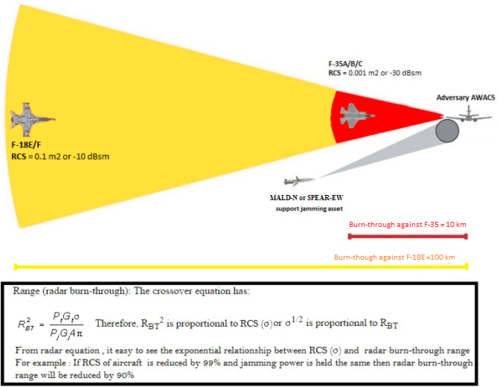
Last edited:
pegasus
I really should change my personal text
- Joined
- 22 March 2019
- Messages
- 303
- Reaction score
- 208
LM Aeronautics JSF Design Adopts DSIFirst of all, no one here ever says stealth aircraft is invisible, so please stop making strawman argument. Lidar is laser used as radar, it is affected by atmospheric conditions such as fog, cloud, rains , smokes, snow.... the range is nowhere close to an actual radar.Now your statement was DSI intakes are smooth i told you it does not matter, with lidars or powerful radars they become visible and closer to the radar they will be pretty visible.
You can not prove the radar range formula say stealth means invisibility, the only thing i said, is the only real limitation is the electricity an aircraft can provide to its radar, but ground radars do not have such limitations and aircraft work with networks, to exemplify it, imaging you have a hall with many lamps, each light is helping you to see, passive radars basically use that, any frequency they are using to see.
Second of all, DSI being smooth does matter because it reduces the amount of surface scattering, it is the same reason the surface of stealth aircraft is far smoother than the surface of conventional aircraft. You can't pretend variable inlet are equally as stealthy as a DSI because they aren't.
Finally, it doesn't matter that your powerful radar can detect stealth aircraft because they can't detect stealth aircraft from as far as they can detect a normal aircraft, that what matters.
The DSI concept was introduced into the JAST/JSF program as a trade study item in mid-1994. It was compared with a traditional "caret" style inlet. The trade studies involved additional CFD, testing, and weight and cost analyses. The new inlet earned its way into the JSF design after proving to be thirty percent lighter and showing lower production and maintenance costs over traditional inlets while still meeting all performance requirements.
https://www.codeonemagazine.com/article.html?item_id=58
System-level trade studies were performed to quantify the weight, cost, and benefits of the DSI, compared to more conventional inlets (e.g., F-22 and F/A-18E/F caret inlet systems). In these studies, a 30-percent inlet weight reduction was estimated for the DSI, relative to the reference caret inlet. The largest contributing factor was the elimination of the bleed and bypass systems. Studies performed by other ACIS contractors [25] indicated similar savings for diverter-less/bleed-less systems
The short test program, starting in 1996, proved highly successful with the modified F-16 tested at all points of the flight envelop up to Mach 2. The tests demonstrated comparable flying qualities to the standard F-16 at all angles of attack and sideslip. In-flight engine restarts and afterburner lights were achieved without failure. The DSI test flights validated the aerodynamic properties of the inlet, which were further proved in testing on the F-35.
To test their theoretical results, Lockheed Martin modified a Block 25 F-16, serial 83-1120, with what is called a “Diverterless” Supersonic Inlet or DSI. The short test program, starting in 1996, proved highly successful with the modified F-16 tested at all points of the flight envelop up to Mach 2. The tests demonstrated comparable flying qualities to the standard F-16 at all angles of attack and sideslip. In-flight engine restarts and afterburner lights were achieved without failure. The DSI test flights validated the aerodynamic properties of the inlet, which were further proved in testing on the F-35.
https://static.dvidshub.net/media/pubs/pdf_34264.pdf
This is a Master Thesis done at the Swedish Defence Research Agency with the purpose to design and investigate how different geometries of a compression surface integrated with an intake affects the performance such as distortion, boundary layer diversion, pressure recovery and deceleration of speed. A successful design, such as that on the Lockheed Martins F-35 Lightning II, shows that a Diverterless Supersonic Inlet (DSI) compared to a conventional intake can reduce the weight, and weight is the primary driver to reduce cost and increase performance of a fighter aircraft.
The diverter separates the inlet from the fuselage and the boundary layer, but it is a design feature causing the inlet weight and drag to increase and with higher maintenance requirements. It is also a negative factor when it comes to radar issues. Boundary layer bleed is a frequently used technique where the boundary layer is diverted by suction through small holes in the structure. Bleed systems can be fixed or movable. Although these techniques are fully functional in an aerodynamic sense, they are complex and add weight and cost into the system.
http://www.diva-portal.org/smash/get/diva2:221/FULLTEXT01.pdf
These three types of loss are illustrated in the inlet shown in figure 2.3: There is the frictional loss due to the thin attached boundary layer associated with on the internal surface of the cowl; the turbulent loss due to the presence of a separation bubble on the floor; and the shock-loss due to the shock which is required to decelerate the flow from a supersonic to subsonic velocities.
2.5.3 The need for multi-shock inlet designs The way to reduce the large stagnation pressure losses associated with the Pitot inlet at high M1 is to introduce multiple shock waves into the inlet system (such as the inlets shown in figures 2.5b–d). The advantage of this approach is well illustrated in figure 2.8, which shows the variation of obtainable pressure recovery using a two and three shock system respectively. These results are based on simple planar shock theory (see Equations, tables and charts for compressible flow by Ames Research Sta↵). It can be seen that big improvements in pressure recovery are achievable using simple compression ramps upstream of the inlet cowl. For example, at Mach 2.5, with a Pitot inlet ( = 0) the recovery is 50%, with a single compression ramp this can be increased to 75%, and with two ramps this can be increased to 87%. The advantage of this multi-shock approach was first noted by Oswatitsch (1944).
https://core.ac.uk/download/pdf/42337454.pdf
The advent of supersonic aircraft powered by airbreathing engines opened up a new set of challenges for intake designers. A rule of thumb often used is that 1% pressure loss reduces thrust by 1%, but it became clear early on that the thrust loss caused by pressure losses in supersonic flight increases nonlinearly. For example, at a flight speed of Mach 2.2, a typical engine losing 8% of the freestream total pressure through the intake will suffer a reduction in thrust of 13% and a 5% increase in fuel consumption [9]. Since the mid-1950s, when this first became evident, a tremendous amount of research effort has gone into the study of supersonic intake pressure recovery and drag
Tradeoffs in Jet Inlet Design: A Historical Perspective András Sóbester∗ University of Southampton, Southampton, SO17 1BJ Hampshire, United Kingdom
4.1.1 Caret Inlet
The caret inlet technique has been understood as an academic concept for many years (Seddon and Goldsmith, 1985), but was not matured to a realistic engineering design until the 1980s. The primary trait of caret inlets is a pair of oblique compression ramps that generate a 2‐D flow field and co‐planar shock waves at the supersonic design point. Primary advantages of the caret inlet are efficient supersonic flow compression (as with the F‐14 or F‐15) and swept inlet edges that can be aligned with the aircraft planform. The challenge with the caret inlet lies at supersonic, off‐design conditions where the shocks generated by the two ramps are no longer co‐planar, resulting in shear layers and potential distortion and inlet instability. The caret inlet concept was adopted for both F‐22 and F/A‐18E/F. Design and development of the F/A‐18E/F inlet is discussed in Hall et al. 1993.
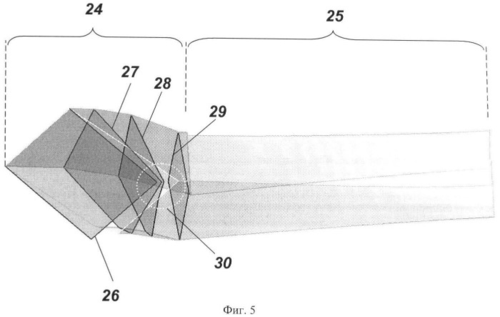
However, inlet characteristic airflow may be significantly greater than the demanded airflow. A bypass system provides a means to spill the excess airflow efficiently without impacting the inlet aerodynamic stability. Bleed and bypass systems typically exhaust the air on the upper surface of the vehicle in a location with a favorable local pressure. On occasion, diverter, bleed, or bypass airflow is utilized as a secondary air source for heat exchangers, ejector nozzles, or other such functions.
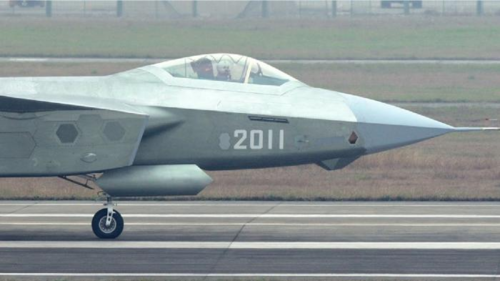
Various research efforts were undertaken to mature the bump inlet concept into a practical design, including a flight test effort on an F‐16 that lead to incorporation of such an inlet on the JSF X‐35 concept demonstrator aircraft and production F‐35 aircraft (see Hamstra, McCallum and McFarlan, 2003; and Hehs, 2000). This particular design, known as the diverterless supersonic inlet, integrated a highly three‐dimensional bump compression surface with a forward‐swept cowl. This combination produces a pressure gradient that diverts the majority of the boundary layer and provides a stable interaction between the inlet shocks and remaining boundary layer, eliminating the need for both boundary layer diverter and bleed systems. A diverterless inlet concept was also employed on the JSF X‐32 demonstrator.
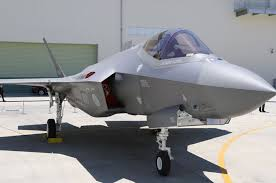
https://onlinelibrary.wiley.com/doi/full/10.1002/9780470686652.eae490
Engine inlets for supersonic aircraft have complex aerodynamic requirements based on Mach number and other flight conditions. Fixed inlet geometries typically have highest efficiency at one specific Mach number and flight condition. Operation at other speeds or flight conditions results in degradation of the aerodynamic performance or efficiency of the inlet. To allow flight at varying Mach number, mechanical systems to adjust the capture area and ramp geometry of the inlet may be employed to increase efficiency. An existing solution to a variable ramps and variable capture inlet is the F-15 Eagle produced by The Boeing Company. This inlet system is highly efficient and is recognized as an optimized inlet design. However, later-generation fighters require unique shaping where the inlet aperture edges are highly swept. In such aircraft a caret-type inlet system is employed. Examples of aircraft employing such inlets are the F-18E/F Super Hornet produced by The Boeing Company and the F-22 Raptor produced by Lockheed Martin. These inlets are fixed geometry inlets and were designed for optimized operation at a particular flight Mach number. At off-design Mach numbers, a fixed-geometry inlet system may not provide the best shaping to maximize pressure recovery. In addition, because the inlet capture area is fixed, the inlet tends to capture more mass flow than the engine needs at lower speed than at the inlet sizing condition. As a result, the excess airflow will have to be spilled or dumped through a bypass; both of which will create additional inlet drag. Because the F-15 inlet system is not a caret-type inlet with the highly swept edges, it is not employed on current-generation fighter aircraft.
It is therefore desirable to provide a variable inlet which maximizes pressure recovery across the Mach envelope range to obtain higher pressure recovery at the engine face for maximizing thrust and fuel efficiency and to minimize inlet spill drag to maximize the propulsion system net propulsive force, thereby maximizing aircraft performance. It is also desirable that the variable inlet operate in an efficient manner without generating additional complexities such as opening gaps that will require more additional mechanisms or seals for closure.
http://www.freepatentsonline.com/9874144.html
Last edited:
Similar threads
-
-
-
WEarly Stealth? 'Means for altering the reflection of radar waves' (US 2436578)
- Started by Wingknut
- Replies: 2
-
Design Challenge: Lightweight Multirole Fighter (LMF)
- Started by VTOLicious
- Replies: 506
-

